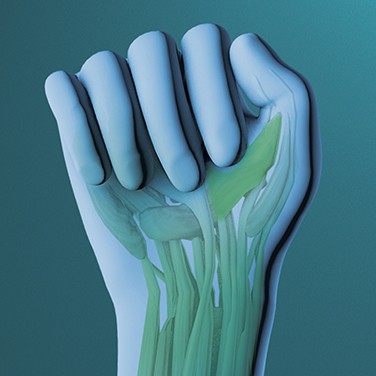Better by Design
How Ergonomically Designed Hand Protection Delivers a Safer, More Productive Workforce
The true economic cost of workplace injury is more than lost wages or time. Ongoing medical expenses, lowered production, and increased worker compensation premiums are the more obvious and measurable aspects, but there are hidden costs as well.
Although harder to assess, increased workplace injury rates contribute to heightened stress or anxiety among workers and can potentially lower both morale and productivity. Identifying and managing hazard risks before any issues arise requires the recognition of less obvious relationships and choosing personal protective equipment (PPE) that is ergonomically designed for specific conditions and tasks.
Common Working Conditions
In many industrial environments, repetitive manual tasks are unavoidable. Workers perform labor-intensive activities like lifting or lowering, pushing or pulling, and holding or restraining tools and other items. Such tasks require repetitive hand and arm movement and can lead to hand fatigue that puts more stress on other parts of the body, contributing to injuries.
These actions can become hazardous through repetition, the use of sustained pressure or force, maintaining prolonged or awkward postures, and ongoing exposure to vibration. These stress the body and potentially lead to a variety of musculoskeletal disorders (MSDs). MSDs typically result from gradual wear and tear (triggered by repetition) or are brought on by sudden strenuous activity or unexpected movement.
The hands and arms are particularly susceptible to a range of conditions brought on by performing manual tasks, including:
- Muscle, ligament, or tendon sprains and strains
- Joint and bone injury or degeneration in the shoulder, elbow, or wrist
- Nerve injuries and compression
- Muscular or vascular disorders
Most of these can be acute or become enduring chronic conditions that threaten long-term health and productivity.
Prevalent but Preventable
MSDs are categorized as “body stressing” injuries and diseases. Workplace-related body stressing injury and disease is expensive and widespread. In the European Union, musculoskeletal disorders are the most frequently reported work-related health problem.1 In Australia, over one third of the totalnumber of worker injury cases and total economic costs are associated with body stressing or manual handling injury.2
In many cases, operations and safety managers include gloves in programs to mitigate the risk of hand or arm injury. However, issues arise when the chosen “solution” fails to address the immediate requirements. And a poorly selected glove can introduce its own risks.
For example, gloves that restrict movement of the hand or fingers require more muscle effort to perform the required tasks. This increases the risk of strain, which can lead to hand fatigue or persistent and painful conditions such as carpal tunnel syndrome.
Establishing Ergonomics
While safety personnel may be familiar with the concept of ergonomics, they may fail to consider the potential impact of PPE choices or incorporate ergonomic best practices and design principles. Primarily referencing the interaction between the worker’s musculoskeletal system and workspace, ergonomic design aims to minimize exposure to risk factors for MSD while increasing efficiency and comfort.
For gloves, this approach negates the oft-cited “comfort versus protection” argument — anecdotal evidence suggests that workers will simply ignore hand protection solutions that impede function or are otherwise uncomfortable.
If recurring or repetitive tasks are known to place strain on the muscles, nerves, and tendons in one’s hands, performing those activities while wearing thick, rigid, ill-fitting, slippery, or otherwise uncomfortable gloves can exacerbate the problem. Safety and operations managers should select a protective glove designed for the specific hazard types and the functions being performed, considering:
- Fit: gloves that are too small compromise movement; those that are too large restrict dexterity
- Grip: the amount of grip significantly affects the amount of muscle effort required to securely handle, hold, or manipulate objects
- Construction: materials and comfort dictate overall wearability
- Application-specific issues: wet conditions, contact with abrasive materials, or the use of vibrating machinery present differing needs; assess each application to determine the optimal glove choice
Selection will vary based on these and other factors, but the process should include an assessment of the effect on manual performance to help workers operate both safely and efficiently.
Advances in glove technology deliver superior hand protection while providing much-needed support for musculoskeletal health, so workers no longer have to choose between comfort and protection. By supplying ergonomically designed protective gloves, employers, managers, and operators can help minimize the risk of MSD injury, support safety compliance, and maintain productivity levels.
Ansell ERGOFORM is a new technology used to design hand protection that supports musculoskeletal health during repetitive tasks. We measure the toll of occupational activities and apply cutting-edge technologies to produce our gloves. ERGOFORM certified products have been scientifically proven to deliver measurable improvements in worker comfort, fit, and productivity while reducing risk factors for ergonomic injury.
- European Agency for Safety and Health at Work, Estimating the cost of work-related accidents and ill-health: An analysis of European data sources, p12
- Safe Work Australia, The Cost of Work-related Injury and Illness for Australian Employers, Workers and the Community: 2012–13, p31





